Same Campus, New Look
Capital improvement projects are making progress, and employees will see some changes when they return to work.
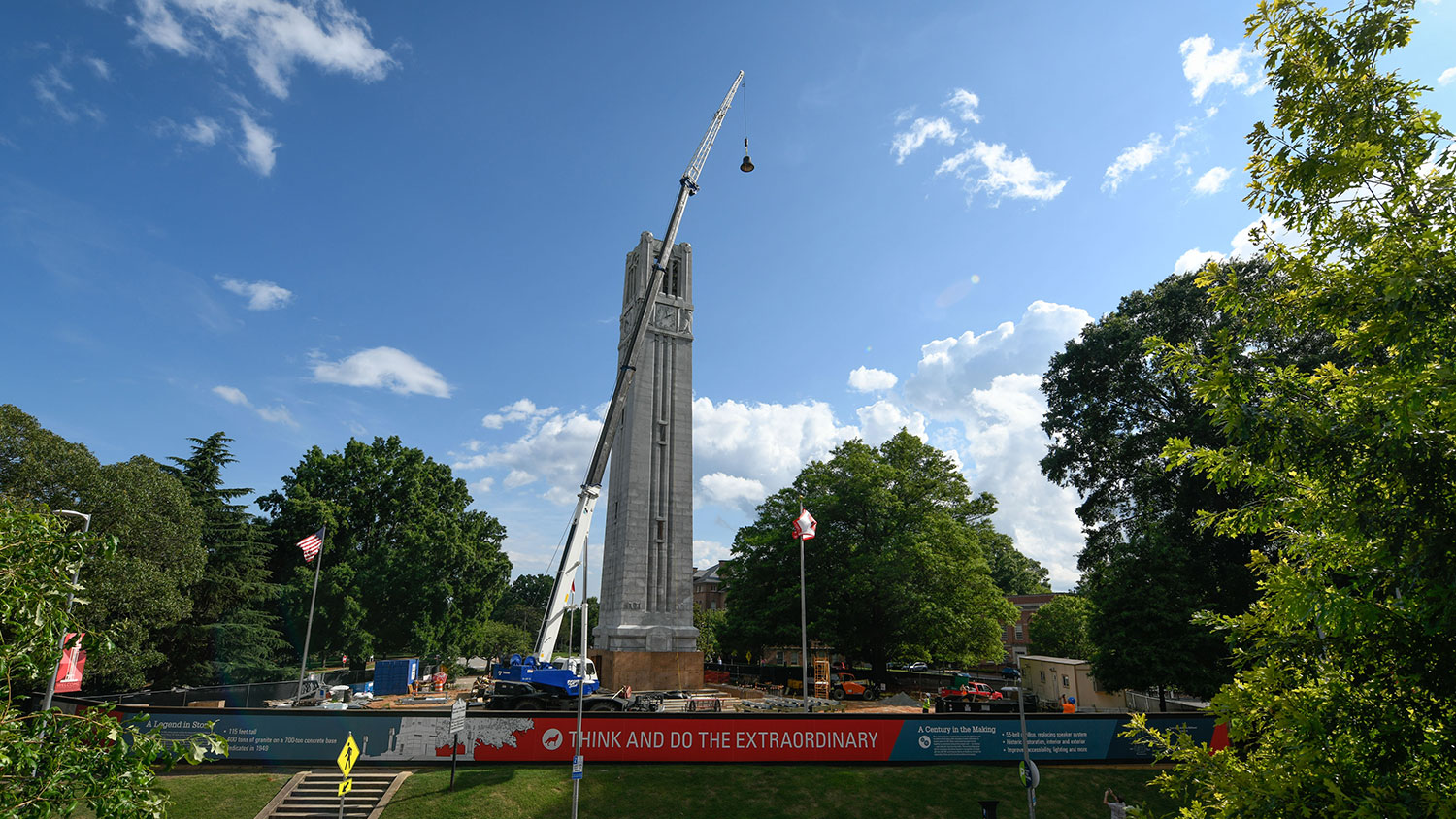
Employees and students who have been off campus the past few months will see some changes when they return.
Capital improvement projects are going forward despite the pandemic, says Cameron Smith, senior director of capital project management. Projects currently in the design and construction phases were already fully funded, including major undertakings such as the Wellness and Recreation Center and Fitts-Woolard Hall.
There will still be some obstacles to maneuver around in August, such as closed sidewalks and fenced-off areas, but that is usually the case with such projects, Smith says.
“I’m always thankful that the campus is so accommodating and willing to walk around if they need to walk around and make way for us,” Smith says. “It’s just constant improvement to support NC State’s growth.”
Here are some of the more notable projects still underway:
Academic Success Center
Estimated completion: End of June
NC State University Libraries and the Division of Academic and Student Affairs partnered on the new center at D.H. Hill Jr. Library that will offer tutoring, academic coaching, advising and career counseling.
The center looks amazing, Smith says, as is work underway at the library’s south entrance that faces the Brickyard.
“We’re trying to make that whole entrance a lot cleaner and exciting as you walk into the new Academic Success Center,” he says.
The south entrance will resemble the north entrance on Hillsborough Street, which was closed for decades until last year when the Facilities division installed sliding doors and security gates and reconfigured the plaza.
Opening the north entrance was a milestone for the university, Smith says. “And the thought was since we’re on the south side, let’s do something similar. D.H. Hill will be inviting on both sides. That’s just something we took advantage of since we were already doing all this construction.”
Fitts-Woolard Hall
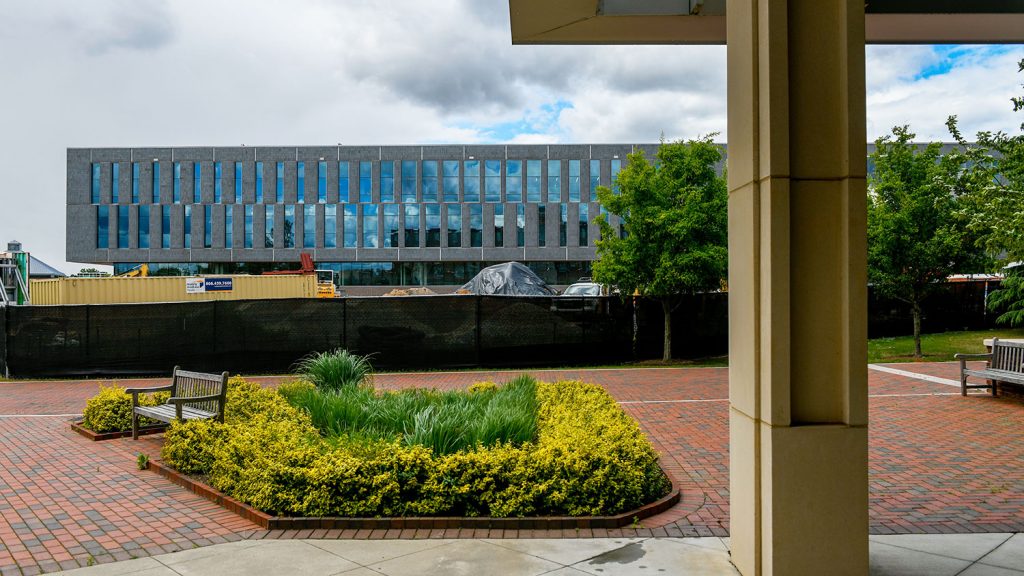
Estimated completion: End of July
The College of Engineering’s new building next to James B. Hunt Jr. Library has grown rapidly since its groundbreaking in 2018. This summer sees final touches such as carpet, paint and ceiling tiles. Smith said the next step is to work with the college to phase people in over the next few months. Furniture and equipment is already moving in.
“I think it’s going to be a great building,” says Smith. He graduated with a degree in civil engineering with a focus on construction, so building the new home for his old college “has been a really neat opportunity.”
Students will be able to walk freely around that part of campus when they return, Smith says. Repairs to the sidewalk between Fitts-Woolard and Engineering Building I are almost finished, as is work on the stairs between the new building and Hunt Library. Partners Way, along the west side of Fitts-Woolard, is completely open.
Wellness and Recreation Center
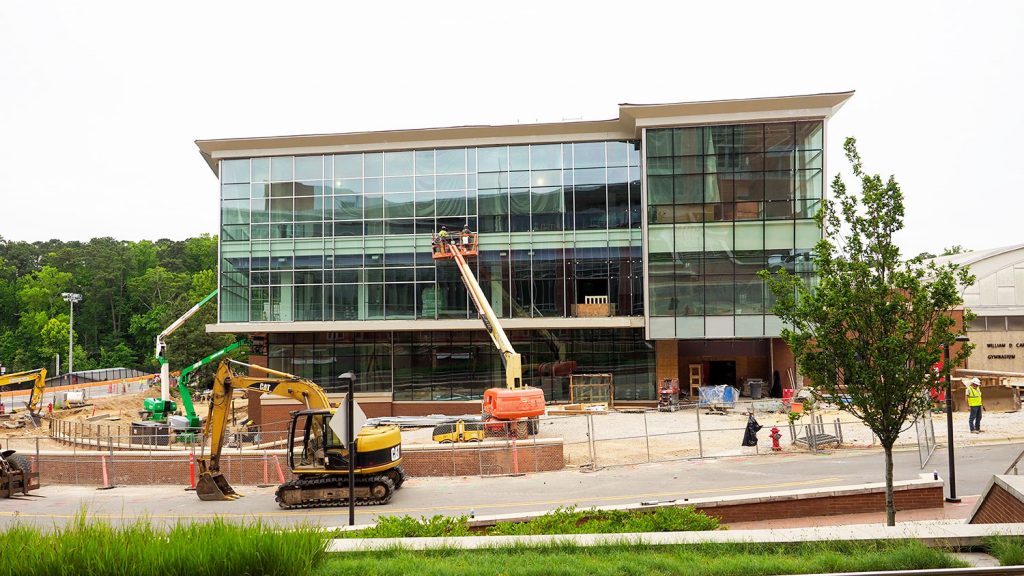
Estimated completion: Mid-September
Carmichael Gymnasium is on track to transform into a multipurpose building that can accommodate wellness staff and a growing student population. At more than 82,000 square feet, the new complex will include a rock wall, a teaching kitchen, studios and more room for people to work out.
“Much more open and flexible workout space as opposed to the specific weight rooms or cardio rooms,” Smith says. “The whole trend for wellness and recreation is moving in a different direction.”
The new addition’s safety features will include fire alarm, fire suppression and smoke evacuation systems. The project also improves the safety systems of the existing building.
Bureau of Mines
Estimated completion: Mid-November
The building near the Free Expression Tunnel will be the new home of the College of Sciences dean and her support staff. The exterior will remain the same, except for new windows and a handicap ramp accessible from Stinson Drive. Inside is a different story.
“We demolished pretty much everything in the interior,” Smith says. “We’re putting in new floors, new walls, all new finishes. We’re installing an elevator. It’s a substantial renovation.”
Memorial Belltower
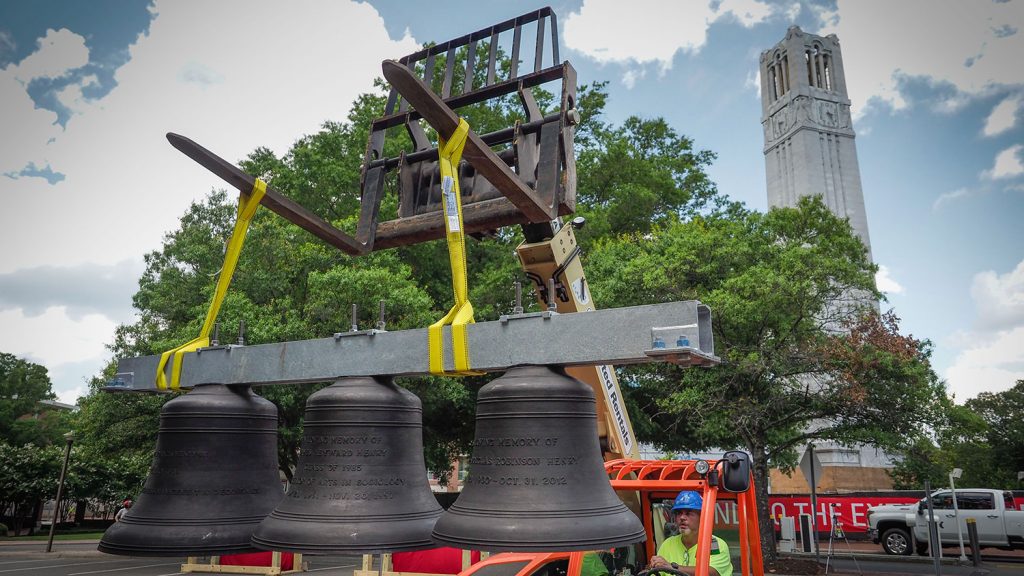
Estimated completion: End of November
The NC State icon has come together piece by piece over decades, starting with the cornerstone laid in 1921. This year, it will finally live up to its name with the installation of a 55-bell carillon.
The top of the Belltower came off earlier this month, Smith says, and one-third of the bells arrived Monday. Crews are working to finish the project by the end of the fall semester, which was moved up because of the pandemic, so that graduating students can partake in a longstanding Wolfpack tradition.
“We’re still accommodating the ring ceremony as best we can,” Smith says, referring to the practice of students leaving their class rings in the Shrine Room overnight. The Belltower’s completion also means students will be able to pose with it for photos.
Plant Sciences Building
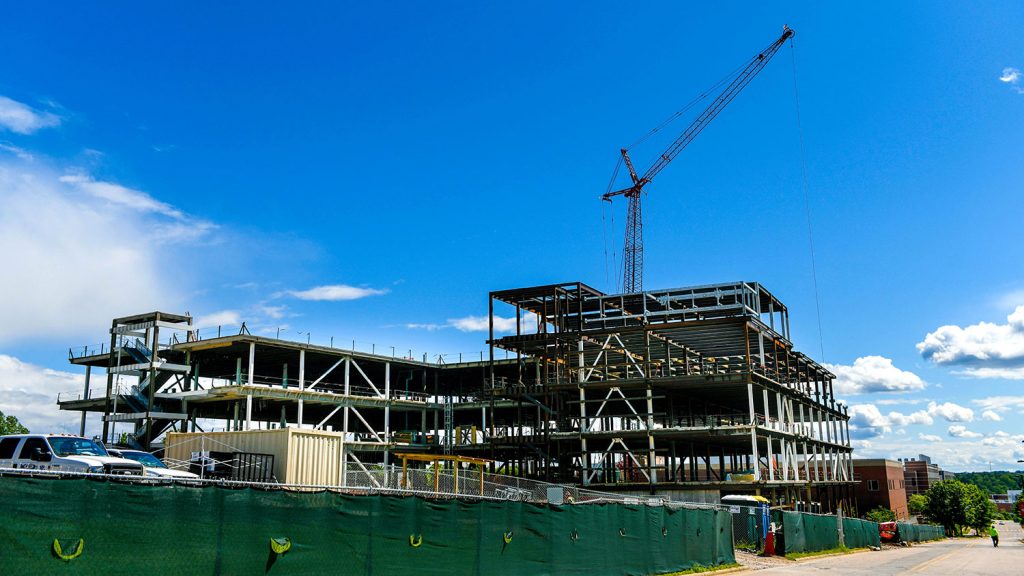
Estimated completion: February 2022
The “topping out ceremony” in which the last structural steel beam was placed on the building took place May 5, Smith says. Crews are now in the midst of mechanical, electrical and plumbing work for the new facility on Centennial Campus that will focus on interdisciplinary research. The 185,000-square-foot building will include labs and greenhouses.
The Facilities division recently finished a mock-up of the exterior features, such as windows, terra cotta and brick, that will serve as a model to ensure both the quality of the materials and the work on the building itself.
“That’s what we do prior to starting the envelope,” Smith says, referring to a building’s exterior structure. “That’s what you’ll see in the next month or two — the exterior envelope going on the building, and we’ll start closing it in, including the roof, over the next few months.”
Electrical distribution upgrade
Estimated completion: 2025
Newer, bigger buildings mean nothing if the lights don’t work. Luckily, a replacement of the underground electrical infrastructure on Central Campus is underway. Cables run through conduits, or pipes, that are grouped together and covered in concrete to form duct banks, Smith says, and that duct bank system is aging.
“We really need to get ahead of repairing it and replacing it so that we can minimize unplanned electrical outages,” he says.
The project originally was supposed to take place over 10 years, but Facilities accelerated it to five, with the growth of campus in mind.
“We’re getting ready to start a new campus physical master plan, and that master plan effort will map out where we’re going to build new buildings on main campus, where we might tear down some buildings,” Smith says. “This new electrical distribution upgrade project will basically realign all the circuits to existing buildings and potentially new buildings, with the capacity to grow.”
Although the system itself is underground, employees and students will have to navigate road and sidewalk closures because of extensive excavations. The Facilities division must also transfer buildings from the existing electrical system to the new one with as little impact on campus as possible.
Centennial Campus
A couple of smaller but noteworthy changes have taken place on Centennial Campus, Smith says. The campus, which operates on its own electrical system, received a substation upgrade to accommodate its new buildings and future growth.
“That was definitely behind the scenes and very impactful,” Smith says. “I don’t think folks realize how reliable the electrical distribution system is here. We own the substations on campus, although Duke Energy transmits the power to us. We control the reliability of that power on campus, and that’s a big deal.”
Centennial Campus also has a new thermal energy storage tank to improve the efficiency of air-conditioning. The tank stores chilled water that it distributes during the day to cool buildings. The water circulates back to the central utility plant, where it is re-cooled. The tank recharges overnight, when electrical rates are lower.
“It provides increased chilled-water capacity as we build more buildings,” Smith says. “It allows us to save energy and money by charging that tank at night versus during the day. That’s a neat project we just did. Not too many universities have their own thermal energy storage system.”
- Categories:


